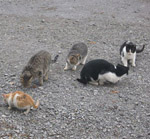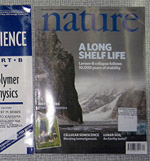The impact from recreational power boating on freshwater turtles
 Freshwater,
Freshwater,  Herps,
Herps,  Recreation
Recreation  Northern map turtle (Graptemys geographica). Image credit, James H. HardingAttention all boaters, please slow down for wildlife! A new study finds that recreational power boating can pose serious threats to freshwater turtles.
Northern map turtle (Graptemys geographica). Image credit, James H. HardingAttention all boaters, please slow down for wildlife! A new study finds that recreational power boating can pose serious threats to freshwater turtles.
Researchers from the University of Ottawa measured the occurrence of power boating injuries to northern map turtles (Graptemys geographica) in two heavy-traffic sites in Canada: the Saint Lawrence River and nearby Lake Opinicon. Through snorkeling and traps, they captured and marked individuals and examined them for injuries.
They found that between 4 to 8% of the turtles exhibited propeller scars. Adult females were 2 to 9 times more likely to show signs of past injury than adult males or juveniles.
Unfortunately, given that killed turtles are rarely recovered, the study was not able to directly measure the mortality rate and its effect on population demographics. Instead they worked backwards to construct a population viability analysis base on hypothetical mortality rates.
According to the analysis, if just 10% of all boat strikes resulted in mortality, it would lead to a 63-99% likelihood of extinction for the two local populations over 500 years. This is startling given that a boat-strike mortality rate of 10% translates to only one female killed every three years. The authors explain why:
"The life histories of turtles are characterized by high adult survivorship and long reproductive lifespans that compensate for the low survivorship of early life stages. Slight increases in adult mortality can consequently lead to important population declines."
Furthermore, for animals with delayed maturity such as the northern map turtle, the risk of extinction is even greater from female mortality. The researchers offer up a few reasons why females may be more susceptible to powerboat strikes:
- Past research has found that female turtles are more likely to bask at the surface of water than males likely making them more prone to strikes from boats.
- Northern map turtles exhibit extreme size dimorphism with adult females more than twice the size of males. This may contribute to a higher risk of being hit.
- At the Saint Lawrence River site where the rate of injuries was higher, mature females travel longer distance than males due to nesting activities during the traffic-heavy months of June and July.
Minimizing the impacts...
Given the threat from power boating to northern flag turtles, the authors offer up a few recommendations to minimize impacts:
"Conservation measures such as restricting speed or prohibiting powerboats in critical habitats could reduce injuries and mortality caused by boating and promote population persistence. Critical habitats especially sensitive to powerboats may include areas surrounding communal hibernation sites, nesting areas, and important basking sites. Restricting engine size or speed may also contribute to reduce collision with powerboats."
Given the projected increases in power boat usage on lakes, these conservation measures may be critical for protecting northern map turtles and other freshwater wildlife species at-risk.
--Reviewed by Rob Goldstein
Bulté, G., Carrière, M., & Blouin-Demers, G. (2009). Impact of recreational power boating on two populations of northern map turtles ( ) Aquatic Conservation: Marine and Freshwater Ecosystems DOI: 10.1002/aqc.1063




Reader Comments